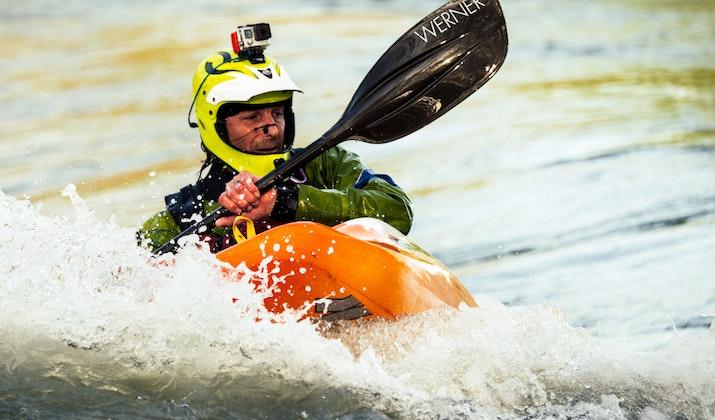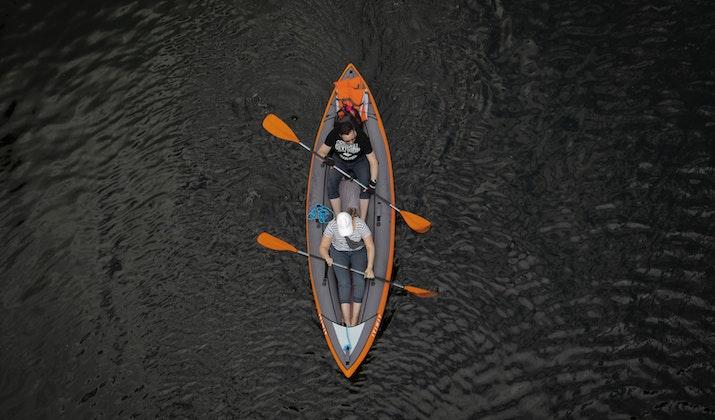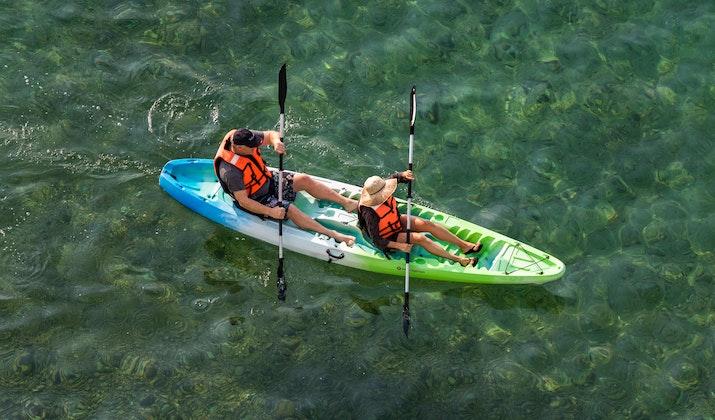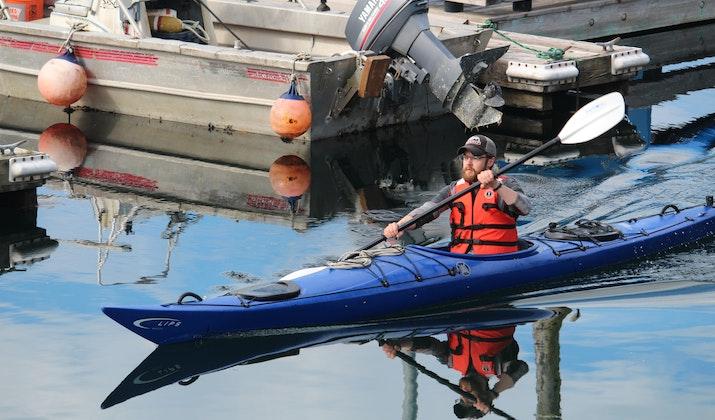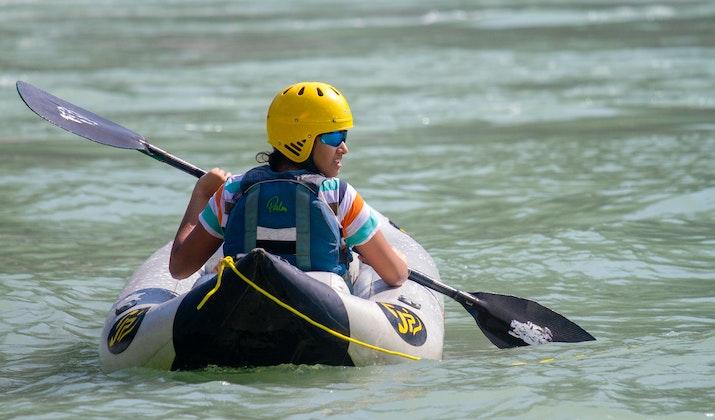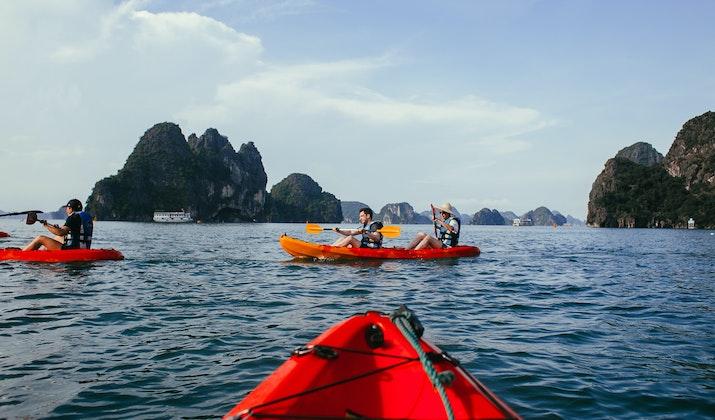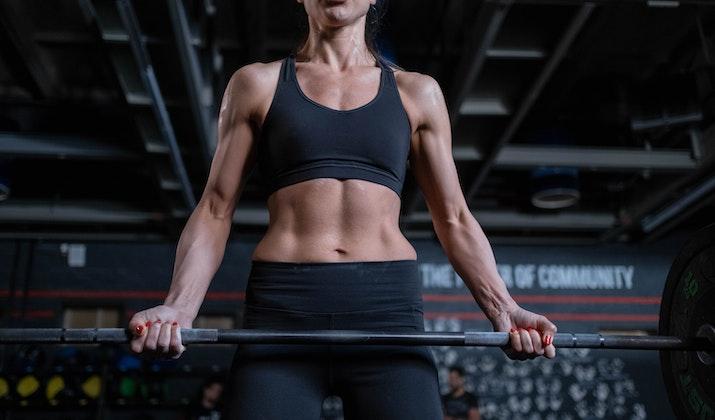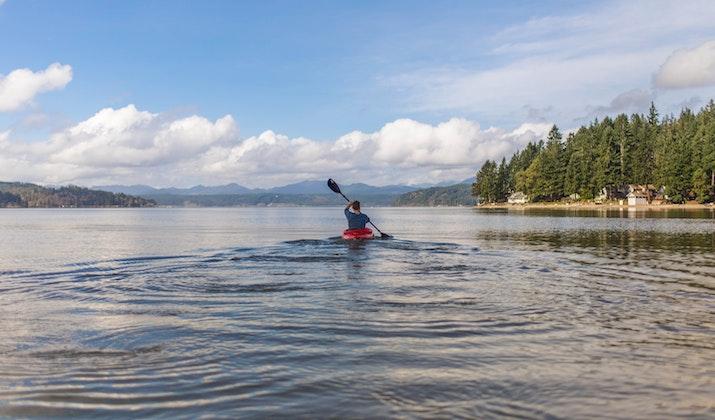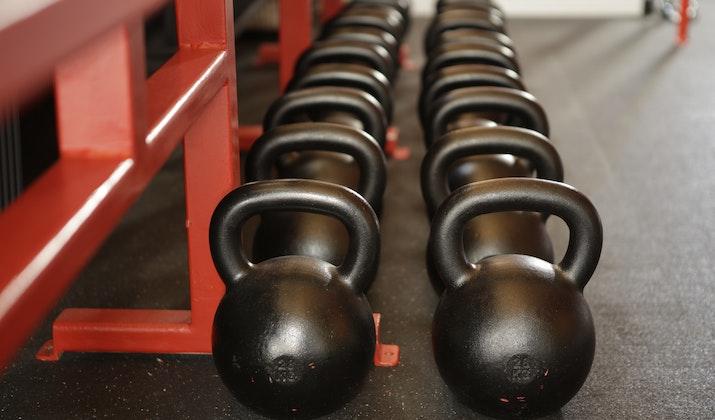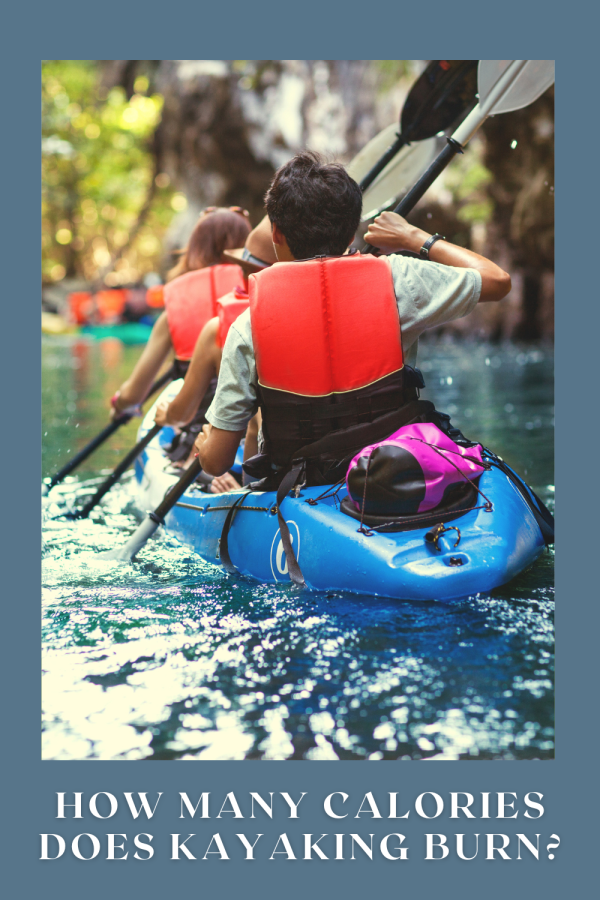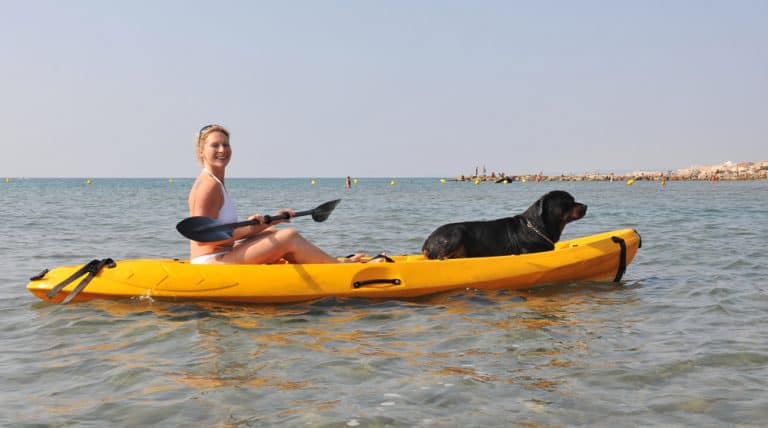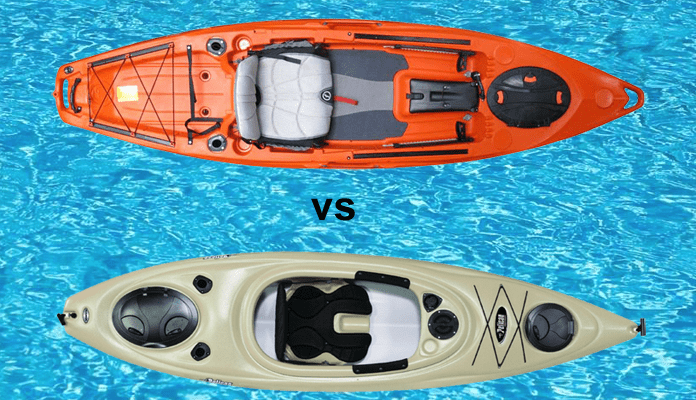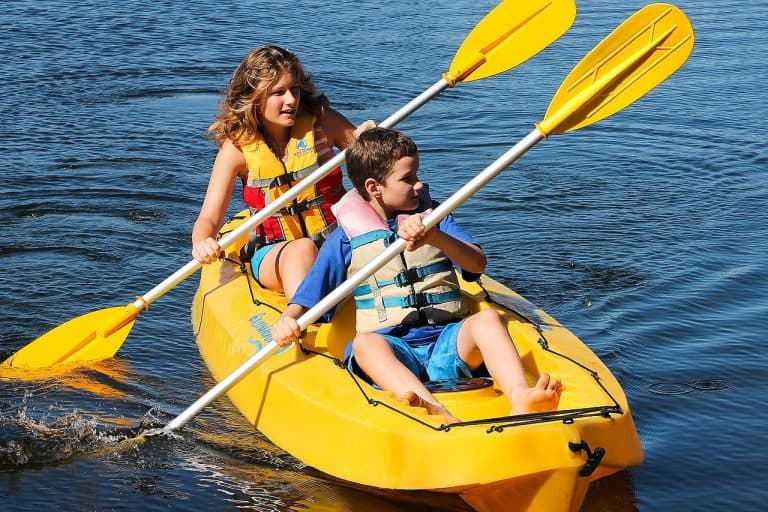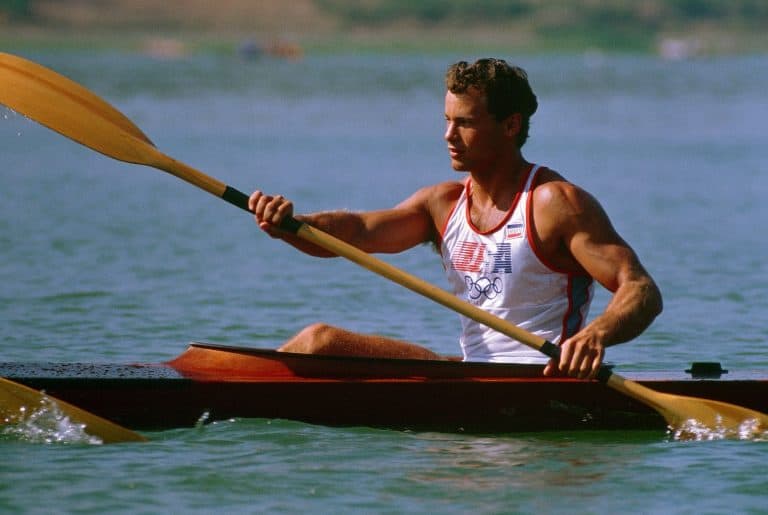There are plenty of ways you can burn calories without having to hit the gym or practise annoying cardio exercises that involve a lot of running and jumping, and one of them is kayaking.
If you’re looking for an amazing low-impact workout that will target your core muscles and help you drop the extra calories, kayaking is worth a try.
In this article, we are going to walk you through everything there is to know about kayaking as a calorie-burning tool and its impact on your health so you can decide whether to take up paddling as part of your exercise regimen.
Photo by Rachel Claire
How many calories can you burn while kayaking?
Kayaking is an activity that requires you to exert yourself physically. This means that every time you glide your paddle into the water to move your kayak forward or simply maintain your balance, you are putting your muscles and energy to work.
And when this happens, calories get burned in the process. However, figuring out exactly how many calories you are using up while kayaking can be a little tricky because several factors contribute to this.
Photo by Brett Sayles
For instance, two people with the same height and weight can burn a different number of calories while kayaking the same route depending on how much effort they put into their kayaking strokes.
Luckily, there are formulas you can use to account for these variables and estimate how many calories you can expect to burn from kayaking. The MET formula is one of the most widely recognized methods for calculating calorie burn rate.
MET (Metabolic Equivalent of Task) is the ratio of the rate at which a person will expend energy while performing a given physical activity compared to their resting metabolic rate (RMR).
When your body is resting and not actively engaged in any physical activity, you have a MET/RMR of 1. On the other hand, a MET of 2 means that you’re performing an activity that burns twice the energy as your RMR.
Essentially, the higher the MET, the greater the calories you’ll burn when doing that activity.
According to the Compendium of Physical Activities, the MET cost of kayaking based on level of intensity is as follows:
| Kayaking Activity & Intensity | Metabolic Equivalent of Task (MET) |
|---|---|
| Light Effort (2.0 mph) | 2.8 |
| Moderate Effort (4.0 mph) | 5.8 |
| Vigorous Effort (>6 mph) | 12.5 |
Bear in mind that your muscles also use 3.5 ml of oxygen per kilogram of body weight per minute. With this figure and MET ratio in mind, you can now apply the MET formula below to calculate the number of calories you’ll burn for every minute of kayaking on average.
Calories burned per minute = (MET × 3.5 × body weight in kg) / 200
Let’s say you weigh 90 kg and you plan to do some moderate effort paddling, your calorie burn rate per minute would be 9.1.
(5.8 × 3.5 × 90kg) / 200 = 9.1
To calculate how many calories you can expect to burn per hour of kayaking simply multiply the calories burned per minute by 60.
Calories burned per hour = (Calories burned per minute (9.1) × 60) = 546.
Going by these calculations, you can burn anywhere from a few hundred to over a thousand calories kayaking depending on the effort you apply.
Tip: Consider investing in a smartwatch if you want more precise calculations of exactly how many calories you burn on your paddling adventures.
What factors affect how many calories you burn while kayaking?
Photo by Simon Bobsien
While the MET formula can give you an estimate of how many calories you burn through kayaking, there are a few variables that will impact your actual number of burned calories.
Some of these variables are not within your control such as genetics, sea, and age, while others are influenced by the environment you’re kayaking in. Here are the core factors that can affect your calorie-burning abilities when you’re out on the water:
- Weight – The heavier you weigh, the higher the number of calories you’ll burn while kayaking. So a bigger person will use up more calories paddling than a person who weighs less.
- Age – As you grow older, your body’s ability to burn calories slows down so instead of losing fat when you work out, you start to lose muscle mass. This means that older kayakers will burn fewer calories than younger paddlers.
- Sex – Men tend to have more muscle mass and less body fat than women so they burn calories at a faster rate even when resting.
- Body composition – Your body type can also influence the speed at which you dump calories. People with more lean muscle mass burn calories more quickly and efficiently than others.
- Duration of exercise – The longer the amount of time you spend kayaking, the greater the calories you’ll use up.
- Kayaking intensity – The type of kayaking equipment you use, how challenging the water is, as well as the speed and effort you use in paddling can make a world of difference to your calorie burn rate. The more intense the session, the more energy you’ll use up.
Is kayaking a good way to exercise?
Photo by Christian Gonzalez V.
Yes, kayaking can be a great opportunity to work out and explore the outdoors at the same time. As long as you’re not simply sitting in your kayak and drifting idly down the river without doing much paddling, you will get a good workout from your kayaking session that will leave you feeling sore and invigorated.
The more time you spend kayaking as a fitness routine, you’ll start to notice your stamina, strength, and overall health getting better.
Kayaking is also a low-impact form of exercise that is easy on the joints, which makes it great for people with bad knees, backs, or ankles.
Unlike running or jogging, kayaking won’t strain your joints too much so you are less likely to get injured in the course of exercising.
The key to getting exercise out of kayaking is to challenge yourself and actively engage in paddling by doing sprints, taking long strokes, riding waves, or chasing rapids.
Even if you’re paddling on flatwater, you can turn it into an exercise session by running sprints. This means that you paddle at a fast pace as if you’re in a race for one minute, then rest for 20 seconds, and repeat this over and over until fatigue sets in.
Is kayaking a good way to lose weight?
Photo by Howard Herdi
Yes, kayaking is a great exercise that can help you lose a few pounds and tone up your body. The beauty of kayaking compared to other forms of exercise like running or lifting weights is that it doesn’t feel like working out.
Even though it takes a considerable amount of effort to propel a kayak forward and navigate through bodies of water, paddling is gentle on the body.
Being out on the water, observing nature, and just basking in the freshness of air around you is certainly more fun than being in a gym surrounded by walls and machines.
While kayaking can help you with your weight loss goals, it cannot do all the work alone. To get the best results, you’ll also need to pay attention to your diet.
You have to eat more nutritionally balanced and healthy diets while cutting down on the amounts of calories you consume. Maintaining a caloric deficit and a steady kayaking routine will help you get lean and keep the weight off.
To get even more excitement and exercise out of your float trips, you can combine them with other activities like swimming, kayak fishing, touring, or paddleboarding.
How often should you go paddling for fitness to lose weight?
Photo by Manik Mandal
Although kayaking is an efficient calorie burner, it won’t get you the results you want to see on the scale unless you are consistent with it.
However, consistency might be tricky for some people because going paddling means leaving your house and heading to a kayaking spot every time you want to exercise.
Not to mention having to pack and carry your kayak to and from the destination, if there are no outfitters near the water from whom you can rent the paddling gear you need.
To unlock the benefits of kayaking as a weight-loss strategy, you have to commit to paddling a few times a week. If you’re a beginner, you can start out by paddling twenty minutes per day using vigorous effort or one hour per day using moderate effort.
As your stamina and endurance grow you can begin to increase the duration of your paddling sessions to burn even more calories.
However, if you cannot find the time to go out in the water three to four times a week, you’ll want to supplement your kayaking efforts with other exercises at home or in the gym to maximize burned calories.
Does kayaking qualify as cardio?
Photo by Rachel Claire
The term cardiovascular or aerobic exercise refers to any form of physical activity that speeds up your heart rate for a prolonged period. When you paddle your kayak, even with low effort, it raises your heart rate and pushes you to take harder breaths.
It engages your arms and legs, which you use to wade through the water and maintain balance. All of this consumes energy which in turn makes your heart pump harder and your blood flow faster.
Kayaking serves as a great cardio workout that can help strengthen your heart, reduce cholesterol, and keep your blood pressure at a healthy range.
Unlike typical cardio workouts such as riding a spin bike or walking on a treadmill which starts to feel monotonous after a while, kayaking stays fresh and new each time.
You can explore different kayaking spots, soak in nature, and experience the thrill of making the water do your body. Even if you revisit the same paddling routes over and over, the constantly changing tides, weather, and flow of the water can make the experience different every time.
What muscles does kayaking work?
Kayaking provides excellent opportunities to work your full body and target major muscle groups. Every time you sail out on your kayak, your paddling motion and the water resistance will help you work, strengthen, and build up the following muscles:
Arms and chest
As you swing your paddle forward, backward, and side to side, your biceps and triceps will get fired up. This pair of muscles work together””one relaxes as the other one contracts””to enable you to move your forearm at the elbow.
Each glide of the paddle also exerts force on your pectoral muscles, helping to pull and push your arm and keep your shoulders steady.
Back and shoulders
The continuous rowing motion of paddling works to build up the muscles in your back and shoulders, especially your lats, trapezius, rhomboid, and deltoids.
Whether you’re doing sprints, wide grip, long sets, narrow grip, or pulling as hard as you can while kayaking, you’ll get an excellent back workout.
Photo by Cottonbro studio
Core and abs
Since you need to control your obliques and abdomen to rotate your body, keep your balance, and sweep your paddle through the water at the right angle, frequent kayaking will result in your abs and cores getting actively engaged.
If you want to build a stronger core, get rid of that stubborn belly fat, and reveal the flat abs hiding underneath in a short time, regular paddling sessions will do that for you.
Legs and hips
Even though kayaking involves a lot of upper-body movement, the lower body isn’t left behind in terms of energy exertion. Your leg and thigh muscles will be engaged while paddling because your feet will be pressed against the kayak’s foot brace to convert your power strokes to motion as you row.
This action is what helps you maintain stability and balance while moving your boat across the water. So while your legs won’t get as much attention as it would while running or jumping rope, they will still get a good workout from kayaking.
Heart
The heart is a muscle and one of the most important ones in your body for that matter so you need to exercise it frequently to allow it to keep functioning properly. Since kayaking is a cardiovascular exercise, it encourages your heart to pump blood faster and beat harder.
It improves your heart health, lowering the risk of heart disease and other health complications like obesity, stroke, and high blood pressure. Aerobic exercises like kayaking can also help reduce blood sugar levels, making it one of the best exercises for people with insulin resistance or type II diabetes.
How to burn more calories while paddling?
Here are some tricks and techniques you can use to amp up your kayaking sessions so you increase the number of calories you burn in one go.
Photo by Roman Pohorecki
Paddle for longer stretches of time
You can use up more energy by spending more time in your kayak. So instead of calling it a day after an hour or half, try stretching your float trip for a couple more hours, taking breaks in between to rest and eat some trip food.
A good way to extend your paddling time is by planning longer trips or going kayak camping so you can cover more distance and still be rejuvenated enough to make it back to land.
Increase your intensity
Increasing the force and effort you use in paddling can raise your MET ratio, allowing you to burn more calories at a faster rate. Paddling harder also works your muscles more efficiently and better stimulates growth.
Use proper paddling techniques
By learning how to row your kayak with the correct paddling technique, you can ensure all the right muscle groups will be properly activated during your trips. Not only will this boost your calorie burn rate, but it will also help you prevent injury and premature fatigue.
Go kayaking upstream
Instead of the usual downstream paddling, switch things by paddling against the flow. You’ll get more of a challenge going in the opposite direction of the water’s flow.
Your heart will start pounding faster within minutes, all your muscles will be tested, and you’ll shed a lot more calories along the way.
Opt for more challenging waters
If you stick to the same calm river that you’re used to, your paddling sessions are going to start feeling too easy and you won’t expand as much energy on them.
To counteract this, you need to challenge yourself by upgrading to slightly more difficult waters with harsher currents, waves, or more demanding obstacles.
Photo by Pixabay
Add some extra weight to your kayak
Increasing the weight in your kayak is another increased calorie-burning option that you can explore. The extra weight will create greater resistance causing you to apply more effort to wade through the water.
However, you need to be conscious of your kayak weight limit and ensure that the addition of more weight doesn’t exceed that limit.
Join a kayaking group
Solo kayaking can be a very calming and fulfilling experience, especially if you’re looking to clear your head. However, going paddling with a groove can force you to push yourself and motivate you to stick to your routine and keep exploring the water.
Besides, when you’re chatting, competing, and having fun with others, time will go by quickly and you’ll end up covering a farther distance without even realizing it.
Conclusion
Kayaking is one of the most fun and enjoyable forms of exercise out there. You get to experience calm, commune with nature, get some Vitamin D, lose calories, and increase your strength and endurance levels at the same time.
So why not buy or rent a kayak and start making your workout sessions an affair to remember and cherish?



